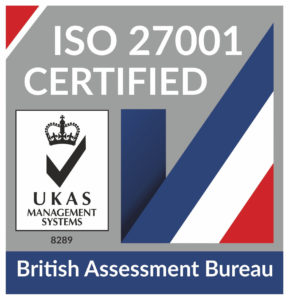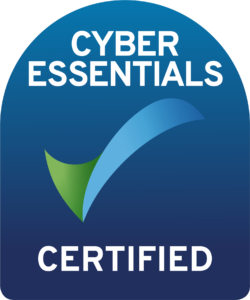
HaloITSM Guides
Documentation to assist with the setup and configuration of the HaloITSM platform
Guides > Email (General Settings)
Email (General Settings)
Incoming Email
| Field | Type | Description |
| Mailbox Setup | Button | This opens up the Mailbox Setup interface. Here you can link mailboxes to your instance for either sending or recieving emails through your instance. |
| Email Rules | Button | This opens up the Email Rules interface. Here you can set up rules that have certain criteria. These criteria, when met, will apply certain actions against the incoming emails. An example might be to ignore any emails coming in from a spam address. |
| Formatted Emails | Button | This opens up the interface for formatting Emails straight into detailed tickets. |
| Dynamic Email Exclusions | Button | This opens up the interface for setting up a list of Email Addresses to exclude from the "Dynamic Email Lists" feature. These are simply Lookup Codes, which the system will look for when this setting is enabled, and will use to exclude certain emails from the function. The only field, then, is a Free Text "Name" field, where the email address should be entered. Any email addresses entered will be unable to email into your Halo. It is recommended to add your halo mailbox emails in here as to mitigate a continuous email loop forming (if one of the mailboxes is sent an email from itself, this creates a back and forth acknoweldgement response which will create many tickets). Other email addresses to add here would be any that have an acknowledgement email sent out, or any that have a bounce back response i..e no reply mailboxes, other ticketing system mailboxes that you may have, etc. |
| Email Start Tag/Email End Tag | Free Text | Inbound emails will update existing Tickets if an existing Halo Ticket ID is found between these tags in the email subject. The current display of tickets will have [ID: {TICKETID}] in the ticket name, when this is changed, it will update the email tags, i.e. instead could use [HALO: {TICKETID}] |
| Use '[ID ]' as an additional subject tag check for Ticket matching | Checkbox | When the default email start and end tags have been changed i.e. [HALO: {TICKETID}] the system will also look for the tag format [ID: {TICKETID}] in the emails subject incoming to Halo. |
| Search Email body for tag and match to Ticket if tag is not found in subject | Checkbox | If checked, Halo will search the email body for these tags (if not found in the email subject) & update existing tickets when an existing Halo Ticket ID is found. |
| Forward incoming updates to all recipients | Checkbox | When checked, this will send an Email containing any ticket updates to those currently in the Email Recipients list for that ticket. This can be viewed by hovering the three dots at the top right of a ticket view, and clicking "Edit Email Recipients". |
| Treat Forwarded Emails from Agents as End-User Emails | Checkbox | When checked, emails forwarded from agent addresses to your mailbox(s) will ignore the forwarded email details & only consider the details of the original email, as if it was sent directly. So if the agent forwards an email from the end-user, the update on the ticket will only include the details the end-user added. |
| Allow forwarded emails from Agents to also update the parent Ticket | Checkbox | When checked, if an Agent forwards the email to another address, this will add that as an Action to the ticket in question. |
| Make Forwarding Agent a Follower | Checkbox | When checked, if an Agent forwards the email to another address, this will add the actioning Agent to the Follower List of the ticket in question. This means they will receive email notifications each time the ticket is Updated, regardless of them being included in the To fields. |
| Agent updates via Email are hidden from End-Users | Checkbox | When selected, Email updates on Tickets from Agent accounts (Emails send from Agents to your mailbox) will not be visible to the End-User |
| Don't allow new Tickets via email | Checkbox | When checked, this will stop incoming Emails from creating Tickets. The ability to update Tickets via Email will still be available. |
| Only route Emails if received into the same mailbox as the existing Ticket | Checkbox | When checked, Emails that come into a different mailbox to that of the ticket to which the email is referencing, will create a new ticket, instead of linking it to the original. |
| Mark Emails From Different Domain Than The One Of The End User As Private | Checkbox | If emails come into the system that are not from the End-User's email address(es), then the note on the ticket will be hidden from the End-User. |
| Match emails on subject and from address | Checkbox | When checked, this will enable ticket matching on Subjects and From Addresses in addition to the Email Tags. This only applies to replies and forwards to existing email chains. |
| Match on the 'In-Reply-To' header | Checkbox | This is dependent on 'Match emails on subject and from address' being enabled. When checked, this will enable ticket matching on 'In-Reply-To' header, this can only be used in conjunction with Office 365/Azure Mailboxes. |
| Only send acknowledgements to email addresses that match a Site's domain name | Checkbox | When checked, only email addresses that match the site's domain name with receive acknowledgements. The site domain can be set against the site. |
| Prevent stopped accounts from creating new Tickets via email | Checkbox | When checked, Users that are marked as inactive, either directly or via Site / Customer level inactivity, will not be able to create new Tickets via Email. |
| Auto replies do not update the status of Tickets | Checkbox | When checked, emails coming in that are auto replies, will not update the Ticket's status. These would usually be acknowledgements or out of office replies. As of v2.168.1 this also includes appointment acceptance emails. |
| Treat emails with the "auto-submitted:auto-generated" header as automatic replies | Checkbox | Set up an email which has header "auto_submitted:auto-generated" and/or "auto-submitted:auto-replied", when these emails enter the system they are classed as auto-replies. This can be seen in the backend service monitoring (Found within Configuration > Advanced Settings > *Scroll to the "Backend Service Monitoring" button*) and is likely easiest to spot on tickets if the setting "Auto replies do not update the status of Tickets" is enabled (Configuraion > Email). If you notice that auto replies are not being caught by Halo, you may find that one of the auto reply settings need to be enabled. How to Deal with Out of Office Automatic Replies from customers |
| Treat emails with the "auto-submitted:auto-replied" header as automatic replies | Checkbox | Set up an email which has header "auto_submitted:auto-generated" and/or "auto-submitted:auto-replied", when these emails enter the system they are classed as auto-replies. This can be seen in the backend service monitoring (Found within Configuration > Advanced Settings > *Scroll to the "Backend Service Monitoring" button*) and is likely easiest to spot on tickets if the setting "Auto replies do not update the status of Tickets" is enabled (Configuraion > Email). If you notice that auto replies are not being caught by Halo, you may find that one of the auto reply settings need to be enabled. How to Deal with Out of Office Automatic Replies from customers |
| Treat emails with the "precedence:bulk" header as automatic replies | Checkbox | When checked, emails containing "precedence:bulk" header will be treated as automatic replies. How they are treated will depend on your automatic reply configuration. |
| Enable AI 'Thank you' email detection on closed/pending closure Tickets | Checkbox | When enabled AI will be used to determine if emails to closed tickets are just thanking the agent. If AI determines the message just contains a thank you and no further action is needed the ticket will remain closed, otherwise the ticket will be reopened. You will need to have the AI module enabled to use this functionality. |
| Enable Check Ticket Details email rule functionality | Checkbox | When enabled you will be able to configure an email rule with type 'check ticket details'. For more information on this see the guide on Automatic Ticket Updates via Email. |
| Incoming email sender verification | Single Select | When set to 'Display a warning...' email update actions (from users) will display a warning if they use an email address that is not on the ticket's to/cc list. |
| If the email sender cannot be matched to a User | Single Select | This setting determines who the end user of the ticket is if a new ticket logged via email cannot be matched to an existing user. If set to create a new user you can set the site the user is created under. If set to assign the ticket to a default user you can choose which user is the default. |
| Send welcome email to new Users | Checkbox | When 'If the email sender cannot be matched to a User' is set to create a new user if a user not matched this checkbox can be enabled to send these newly created user a welcome email. |
| Ignore duplicate Emails | Checkbox | Enabling this will check that a ticket has already been created for this email and ignore the email if it has already been created. This works even if the email is sent into two separate mailboxes, the first one that comes in will go through and the second will be marked as a duplicate. |
| Emails from Co-managed Agents are treated as Users | Checkbox | When this setting is enabled if the agent has the "Co-Managed IT" setting enabled from within Configuration > Teams & Agents > Agents > *Click into the Client Restrictions Tab* and they aren't in the team that the ticket is assigned to then the system will treat the email as an end-user's. If this "Co-Managed IT" agent has forwarded on an email from another end-user, it will log the ticket as the other end-user. The benefit of this is that the Co-Managed IT agent can email in to update the ticket as an end-user update if needed. |
| Days until welcome and password emails expire | Integer | Allows you to set the number of days welcome emails and passwords will last before expiring. After expiry a new welcome email/password will need to be sent. |
Primary Language of Email Communications | Single Select | Here, you can set the primary language email communications take place in. |
Response to acknowledgment emails from external Halo instances | Single Select | Here, you can choose how your Halo instance processes acknowledgement emails from other Halo instances. The acknowledgement can either be ignored or log a new ticket. If selected to log a new ticket the ticket that is logged will not send an acknowledgement email even if configured to do so. |
Outgoing Email
| Field | Type | Description |
| Outgoing Email Defaults | Button | This opens up the interface to set up Outgoing Email Defaults, where default settings such as a Display name can be set up for any Mailboxes that do not have them set up already. |
| Message Groups | Button | This opens up the interface for configuring Message Groups. These can be used to restrict the Templates available per Customer in order to avoid confusion. Once opened, this will present a menu to configure the groups; you can change the name of them here, and use the "View/Edit Email Templates" button to head straight to the list of Templates that are categorised under that group. |
| Email Templates | Button | This opens up the interface for creating and editing Email Templates. These are used throughout the system for regulated Email structures. |
| Set display name to Agent name for outgoing emails | Checkbox | When checked, Emails will be sent out with the sender being marked as the Agent actioning's name. |
| Show Email preview after an Email Action | Checkbox | When selected, any actions in Halo that will send an email will present you with an 'email preview' window, allowing you to doube check the email contents before sending. |
| Allow Actions to be edited on the email preview screen | Checkbox | When selected, the email preview window will be editable allowing you to make final amendments from this window. |
| Allow Email Subject to be edited on the New Action screen | Checkbox | When checked, this will allow the Email Subject to be altered at the point of previewing the Email prior to it being sent. |
| Email Subject Character Limit | Integer | Here, you can set a character limit for the subject of all outgoing emails from Halo, this value excludes the start and end tags, so regardless of the limit here the start and end tab will always be included in the subject. Used to prevent start/end tags being truncated when emails are sent out to other applications that have a different character limit. If the third party application has a smaller limit start and end tags may be truncated causing replies to exclude start/end tags (v2.184+). |
| Show the "Send an Email" option on the Tickets screen to send standalone emails | Checkbox | When selected, you will find an additional option when hovering over the 'New' button found in the Ticket list screen - 'Send an Email'. This option allows you to send emails from Halo without the need for an existing Ticket to be created. |
| Use the email address of the Agent's default Team as the default 'From' address for standalone email actions | Checkbox | When checked, when a standalone email action is used the default 'from' address of the email will be the default mailbox of the agent's default team. This will be the default team of the agent who completes the action, not the agent/team assigned to the ticket. The from address can still be overridden on the action itself. |
| Prevent editing of Email Recipients on Tickets | Checkbox | When checked agents will not be able to edit the email recipients list for the ticket. This will not appear as an option in the ticket details. Admins will still be able to edit email recipients. |
| Show stand alone email actions in User Activity Feeds | Checkbox | When this is enabled, the actions that were "Send an Email" will show as standalone within the users activity feed. |
| Send Acknowledgement Emails to To addresses | Checkbox | When disabled, new Ticket acknowledgement emails will not be sent from Halo (to people who email into one of your mailboxes). NB: This setting can also be toggled per:
|
| Send Acknowledgement Emails to CC addresses | Checkbox | When disabled, new Ticket acknowledgement emails will not be sent from Halo (to people cc'ed into emails sent into one of your mailboxes). |
| Forward Agent updates via Email to End-Users | Checkbox | When checked, if an Agent Emalis into the mailbox with the relevant matching fields present (i.e., it's linked to a ticket), then that ticket will send the Agent's email to the End-User too, as well as updating the ticket. |
| Disable Reply directly to me option on email actions | Checkbox | When checked, the option to "Reply directly to me" alongside the "Show From", "Show CC" options will be hidden. This option will have the recipient's reply go to the Agent's email address as opposed to the helpdesk's. |
| Use Intellisense for email addresses | Checkbox | When enabled, Halo will predict email addresses as you are populating the email To/CC. When disabled, all email addressed must be manually typed. This can be configured at action level when intellisense is enabled from here. You can choose to use this for suppliers and/ or users when you are configuring actions. |
| Email Address autocomplete behaviour | Single Select | This offers the choice of which email addresses come up in the autocomplete options when typing in the email fields. It can be restricted to only the User of the tickets Client's email addresses, or all Users. Intellisense can be configured per action that includes email adresses. |
| Cache autocomplete options | Checkbox | When enabled, autocomplete options will be saved in the browser's Cache, which allows faster loading. This will be ignored when there are more than 5000 email addresses present. |
| Use Dynamic Email Lists | Checkbox | When enabled, the To/CC fields on emails sent from Tickets in Halo will be inherited from the previous correspondence on a Ticket. When disabled, the end-user email will always be the default for outgoing emails. |
| Update email lists after processing inbound Agent or User emails | Checkbox | When checked, the email list for that ticket, which is visible via the three dots at the top right of the ticket view under "Edit Email Recipients" will be updated after any public communications (emails in or out). This means that if an email was present in the list beforehand, but is not then included in a subsequent email, then it is removed from the list. |
| Remove previous User from email lists when changing User | Checkbox | When checked, should a User be changed on the Ticket, then the old User's Email address will be removed from the Email list. |
| Add 'X-Auto-Response-Suppress' header to all outgoing emails | Checkbox | When this is enabled, when emails go out to users and the user auto replies, the auto reply will be ignored. |
| Enable email threading for outgoing Action emails | Checkbox | When this is enabled, any outgoing email actions will send as part of the existing email chain with the end user. As emails will be a part of the chain it is recommended to not use $-EMAILHISTORY variables to avoid duplication. This will not work in conjunction with the 'Add 'X-Auto-Response-Suppress' setting. Only available for Office365/Azure mailboxes. (v2.168.1+). |
| Allow the Web Application to handle the sending of Emails [LEGACY] | Checkbox | When checked, this will send all outgoing Email traffic via the NHServer, instead of processing it in-app. With the "new" incoming and outgoing service, there is no reason to have this enabled, since the benefits of using it have since been transferred to the web-app's functionality. |
| Allow the Web Application to handle the creation of acknowledgement Emails [LEGACY] | Checkbox | Then checked, this will send any outgoing Acknowledgement Email traffic via the NHServer. This is no longer relevant since the web-app is now capable of this. |
| Create acknowledgement emails in the background using an Automation | Checkbox | Email acknowledgement creation can use Automations to create in the background When time-sensitive event processing in advanced settings is set to "Use Automation/Event Service", the "Allow the Web Application to handle the creation of acknowledgement emails" setting in email settings now changes to "Create acknowledgement emails in the background using an Automation". When this is set to true, acknowledgement emails will be created using the Automation engine, allowing sending of these to be fast, and not slow down the creation of the ticket. |
| Outgoing Email Size Limit (MB) | Integer | This places a cap on the size of file(s) that can be attached to an Email. This also takes into account the size of the Email itself, so if the Email contains too much content, this limit could be reached without the addition of attachments. |
| Store a record of outgoing emails for debugging [LEGACY] | Checkbox | When enabled, this stores any outgoing Emails in it's own Log Files folder, the location of which is defined in Advanced Details > Configure NHServer. |
| SMS Settings | Button | This opens the SMS Settings interface, where the options for sending emails as SMS messages can be configured. |
| Show ''Send SMS To End-User'' checkbox on Actions | Checkbox | When checked, this enables the option to use the Email to SMS service when contacting End-Users. |
| Show the Mailbox name instead of the email address in From address dropdowns | Checkbox | When checked, this will replace the Email address with the name of the Mailbox when selecting one of multiple via the "From" field on Email actions. |
| Allow multi-language email templates | Checkbox | When checked, email templates can be translated. Each template can be set if it can be translated or not. |
| Override Outgoing Emails | Single Select | (v2.184.1+) Sets a global email that overrides everywhere in Halo. Allows testing of functions without risk of sending to end-users, and can be set to off, only UAT, or all instances. |
| Override Emails | Text | (v2.184.1+) Appears when above is enabled, and sets the emails the override goes to. |
Popular Guides
- Asset Import - CSV/XLS/Spreadsheet Method
- Call Management in Halo
- Creating a New Application for API Connections
- Creating Agents and Editing Agent Details
- Departments and Teams
- Halo Integrator
- Importing Data
- Multiple New Portals with different branding for one customer [Hosted]
- NHServer Deprecation User Guide
- Organisation Basics
- Organising Teams of Agents
- Step-by-Step Configuration Walk Through



